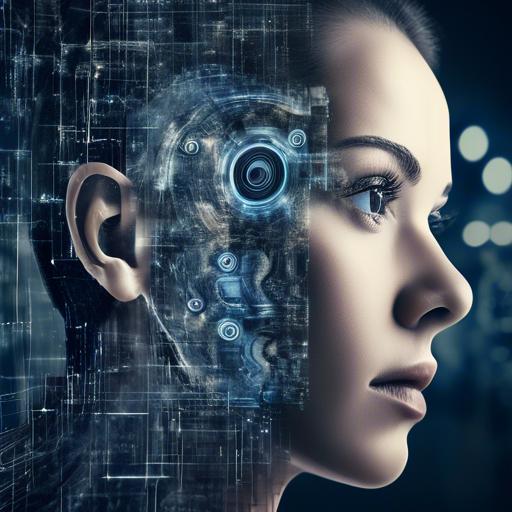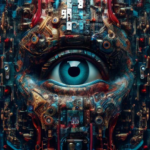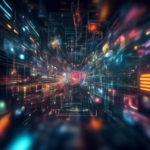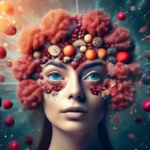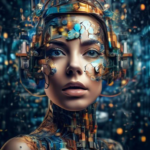Welcome to the frontier of creativity! In a world where technology dances hand-in-hand with imagination, AI image generation tools have emerged as the brushstrokes of the modern artist. Whether you’re a seasoned designer seeking that extra spark, a marketer on a mission to captivate, or simply a curious soul enamored by the possibilities, this guide is your trusty sidekick. Together, we’ll explore the kaleidoscopic landscape of AI image generation, equipping you with the know-how to distinguish the gems from the gravel. So, grab your virtual magnifying glass and let’s embark on this exciting journey to master the art of evaluating AI image generation tools. Your creative adventures await!
Table of Contents
- Understanding the Basics of AI Image Generators
- Evaluating Image Quality and Realism
- Assessing the Scope of Creative Control
- Analyzing User Interface and Usability
- Exploring Customization and Personalization Options
- Measuring Speed and Efficiency
- Investigating File Compatibility and Export Features
- Comparing Cost and Subscription Models
- Considering Ethical Implications and Biases
- To Wrap It Up
Understanding the Basics of AI Image Generators
Artificial Intelligence has swiftly permeated the realm of image generation, offering incredible possibilities for artists, developers, and creatives alike. AI image generators use sophisticated algorithms, particularly deep learning and GANs (Generative Adversarial Networks), to produce high-quality images from textual descriptions, sketches, or other inputs.
One of the core concepts to grasp is how **Generative Adversarial Networks** function. In these systems, two neural networks, the generator and the discriminator, engage in a continuous game where the generator strives to create realistic images, while the discriminator attempts to distinguish between real and generated images. This iterative process drives the generator to produce increasingly convincing images over time.
When exploring different tools, consider the unique features each one offers:
– **Ease of Use:** User-friendly interfaces can make a significant difference. Look for tools that offer drag-and-drop capabilities or simple upload features.
– **Output Quality:** Image resolution and detail level matter, particularly for professional use cases.
– **Customization:** The ability to tweak parameters, such as style and texture, enhances creative control.
- **Speed:** The generation time can vary, and quicker tools save valuable time in iterative processes.
– **Pricing Models:** Some tools offer free trials with limitations, while others operate on subscription models with premium features.
Here’s a comparison table highlighting some popular AI image generation tools:
| Tool | Ease of Use | Output Quality | Customization | Speed | Pricing |
|---|---|---|---|---|---|
| Tool A | High | Excellent | Moderate | Fast | Subscription |
| Tool B | Moderate | Good | High | Moderate | Freemium |
| Tool C | Low | Moderate | Low | Slow | Free |
As you delve into the world of AI image generation, remember that experimenting with multiple tools can provide a better understanding of their strengths and limitations. By comparing these fundamentals, you can select the most appropriate tool for your specific needs, enhancing your creative workflow and expanding your artistic horizons effortlessly.
Evaluating Image Quality and Realism
When measure the excellence and authenticity of images generated by AI tools, several key aspects must be taken into consideration. It’s not just about pretty pictures, it’s about ensuring they fulfill their intended purpose and resonate with their audience. Let’s dive into some of the most critical factors to examine:
- Resolution and Clarity: High-resolution images are more appealing and provide more detail. Check for sharpness and absence of distortion. An AI tool that delivers crisp images is always a keeper.
- Color Accuracy: Evaluate whether the colors in the image match your expectations. AI-generated images should have vibrant, yet realistic colors that complement the intended mood and theme.
- Consistency: This includes consistency with the original image’s attributes (like style and theme) and across multiple images if you’re creating a series. A reliable AI will maintain these elements.
Realism in AI-generated images can sometimes be subtle, but here are a few cues to keep your eye on:
- Detail Authenticity: Look for natural textures and details. For instance, skin textures, hair patterns, or natural shadows should look realistic, not plastic or overly smoothed out.
- Context Appropriateness: Objects, people, and backgrounds should logically fit together. An image where elements look out of place can break the illusion of realism.
- Overall Coherence: Consider the image as a whole. Does everything blend seamlessly, or do you notice odd transitions and mismatched lighting?
| Aspect | Consideration |
|---|---|
| Resolution | Sharp, high-resolution without distortion |
| Color Accuracy | Vibrant, realistic colors that match the theme |
| Consistency | Maintained attributes and style across images |
| Detail Authenticity | Natural textures and realistic details |
| Context Appropriateness | Logical placement of objects and people |
The beauty of AI-generated imagery lies not just in its visual appeal, but in its ability to seamlessly integrate into intended contexts and evoke appropriate responses. By focusing on these factors, you can better gauge the effectiveness and quality of the tool you’re using, ensuring the end results are compelling and lifelike.
Assessing the Scope of Creative Control
Evaluating the scope of creative control offered by AI image generation tools revolves around a few key considerations that can greatly impact the quality and customization of your generated images. Understanding these factors will guide you in selecting the tool that best fits your needs, whether you’re an artist, a designer, or a business owner looking for unique visuals.
- User Interface: A user-friendly interface can make or break your creative experience. Look for those that offer intuitive controls, clear options, and useful prompts that guide you through the process.
- Customization Options: The level of customization available is crucial. Tools that allow you to fine-tune parameters such as color palettes, textures, and design elements offer a richer, more tailored output.
An advanced AI image generator should ideally support various input methods, including textual descriptions, sketches, or other images for reference. This flexibility empowers users to shape their vision more accurately. Moreover, the ability to integrate with other software—like popular design tools—can significantly enhance workflow efficiency.
| Feature | Importance | Examples |
|---|---|---|
| Customizable Templates | High | Adjust colors, elements |
| Input Methods | Moderate | Text, Sketches |
| Integration | High | Adobe, Canva |
An often overlooked aspect is the tool’s learning curve. While some AI tools are immediately accessible, others might require a bit more time and effort to master. Evaluate the available resources for learning, such as tutorials, webinars, and community forums, which can be immensely helpful.
- Support & Documentation: Comprehensive guides and responsive customer support ensure you’re never stuck for long, allowing you to make the most out of the tool’s capabilities.
- Community & Feedback: Engaging with a community of users can provide insights, inspiration, and feedback that can further elevate your creative control and outcomes.
Analyzing User Interface and Usability
When scrutinizing AI image generation tools, it’s crucial to delve into their user interface (UI) and usability aspects, as these factors significantly influence the overall user experience. A well-designed UI not only enhances visual appeal but also ensures intuitive navigation, making it easier for users to harness the full potential of the tool.
- Simplicity and Intuitiveness: Look for a UI that is clean and straightforward. The layout should guide the user logically through the image generation process, avoiding unnecessary complexity.
- Customizability: Check if the tool offers options to personalize settings, themes, or workflows. A customizable interface can cater to diverse user preferences, enhancing comfort and productivity.
- Accessibility: Ensure that the interface adheres to accessibility standards, supporting diverse user needs, including those with disabilities. This includes keyboard navigation, screen reader compatibility, and scalable text.
Moreover, the usability of these tools is equally important. Evaluate how efficiently a task can be completed using the tool, considering factors like response time and error management. The best tools are often those that blend powerful functionality with a user-friendly interface, minimizing the learning curve and maximizing output quality.
| UI Aspect | Description | Importance |
|---|---|---|
| Navigation | Ease of moving through different sections | High |
| Visual Design | Overall aesthetic and appeal | Medium |
| Customization | Options to personalize the interface | High |
| Accessibility | Support for users with disabilities | High |
| Feedback | System responses to user actions | Medium |
Remember, a seamless user experience significantly reduces frustration and increases satisfaction, leading to more effective and creative use of AI image generation tools. Prioritize tools that strike a balance between aesthetic design and functional utility to ensure they meet your needs comprehensively.
Exploring Customization and Personalization Options
Diving into the realm of AI image generation tools offers immense potential for customization and personalization. To truly harness the power of these advanced tools, it’s vital to understand and explore the options available.
- Template Selection: Choose from a variety of preset templates that range from minimalist aesthetics to intricate designs.
- Brush and Style Libraries: Access extensive libraries that provide different brushes and art styles, allowing the user to experiment with various visual effects and textures.
- Color Palettes: Personalize images with custom color palettes that reflect your brand or personal preferences.
To further elevate your creativity, many tools offer integration with third-party applications or plugins, enhancing functionality and opening new avenues for image manipulation. Look for platforms that support plugins for advanced editing, AI enhancements, and seamless export options to other software like Photoshop or Illustrator.
| Feature | Benefit |
|---|---|
| Batch Processing | Effortlessly apply changes to multiple images simultaneously |
| Real-Time Previews | Instantly see how adjustments will look without rendering the final image |
For those seeking deeper engagement, explorations into AI-driven image generation might include customizable workflows. Utilizing conditional logic and AI’s decision-making capabilities, these workflows allow for repeated tasks and specific actions to be automated, tailored explicitly to user preferences.
Moreover, user-friendly interfaces imbued with drag-and-drop functionality and intuitive design elements cater to both beginners and seasoned designers. When evaluating tools, consider not only the available features but also the ease with which these features can be applied to your creative projects.
Measuring Speed and Efficiency
To begin evaluating AI image generation tools, it’s crucial to assess both their speed and efficiency. These qualities can make a significant difference in how well the tool integrates into your workflow, especially if you are dealing with high-volume projects or have tight deadlines.
Speed Measurement:
- **Generation Time:** This refers to the time it takes from inputting a prompt to receiving the final image. Faster generation time ensures a smoother and more efficient workflow.
- **Batch Processing:** Evaluate how quickly the tool can handle multiple image generation requests simultaneously. Tools that support batch processing can significantly enhance productivity.
Efficiency Metrics:
- **Accuracy:** Assess the tool’s ability to generate images that closely match the given prompts. Higher accuracy reduces the need for multiple iterations.
- **Resource Utilization:** Consider the amount of computational resources the tool uses. More efficient tools will generate images faster without overloading your system.
To help you better understand, here is a comparison table showcasing sample speed and efficiency metrics of popular AI image generation tools:
| Tool | Generation Time (secs) | Accuracy (%) | Resource Utilization |
|---|---|---|---|
| Tool A | 10 | 92 | Moderate |
| Tool B | 7 | 85 | High |
| Tool C | 12 | 95 | Low |
consider both speed and efficiency as they play complementary roles in creating a seamless user experience. An ideal tool should strike a balance between quick generation times and accurate, resource-friendly outputs. Taking the time to evaluate these aspects will pay off, ensuring you select the most suitable AI image generation tool for your needs.
Investigating File Compatibility and Export Features
As you delve into AI image generation tools, one crucial aspect to consider is how well these tools handle file compatibility and their robustness in export features. Different users have varying needs, such as high-resolution outputs for printing, web-optimized images for online usage, or specific file formats compatible with existing workflows. Thus, understanding these facets ensures smoother integration into your projects.
- File Format Support: It’s essential to explore the range of file formats the tool supports. Look for common formats such as JPEG, PNG, TIFF, and GIF. Advanced tools might also support newer formats like HEIF or even raw image formats like DNG and RAW.
- Quality and Resolution: Another aspect is the quality and resolution of the exported files. Ensure the tool can generate high-resolution images suitable for your needs, whether it’s for print, digital displays, or web use.
- Export Customization: The ability to customize export settings can be a game-changer. This includes options to adjust quality, resolution, color profiles, and even file compression methods.
Furthermore, specialized use cases may require specific export features. For instance, **vector formats** such as SVG may be essential for graphic designers working on scalable graphics, while **animated formats** like APNG or WebP can be critical for digital marketers seeking interactive content. An easy-to-read table can highlight some key attributes:
| Feature | Description |
|---|---|
| JPEG | Commonly used, lossy compression, adjustable quality |
| PNG | Lossless compression, supports transparency |
| TIFF | High-quality, large file size, often used in printing |
| SVG | Scalable vector graphic, ideal for illustrations |
| GIF | Supports animations, limited color palette |
When evaluating AI image generation tools, also check for batch export capabilities, which can save time when working with multiple images. Additionally, the ability to directly integrate with third-party applications through API support or custom workflows can significantly enhance efficiency. Consider these features carefully to ensure the tool aligns with your specific workflow requirements.
Comparing Cost and Subscription Models
| Tool | Cost | Subscription Model |
|---|---|---|
| ImageGen Pro | $29/month | Monthly, Annual |
| AIArtist | Free | Freemium |
| CreativeBot | $49/month | Monthly |
When delving into the world of AI image generation, understanding the cost structure and subscription models of various tools can immensely impact your decision-making process. *ImageGen Pro*, for instance, offers flexibility with both monthly and annual subscription options. Priced at **$29 per month**, this tool strikes a balance between affordability and robust functionality, making it a popular choice for consistent users.
On the other hand, tools such as *AIArtist* adopt a **freemium** model. While offering a free version, it may come with limitations that can only be unlocked through additional premiums. This allows users to test the basic features without any financial commitment, making it particularly appealing for beginners or those with light usage needs.
Meanwhile, *CreativeBot* presents a different spectrum with its **$49 monthly** subscription model. With this, users typically gain access to a suite of premium features, advanced algorithms, and dedicated customer support. This option might suit professionals who require top-tier performance and are willing to invest more for high-quality output.
To further assist in your decision, consider listing out what each tool offers in terms of cost efficiency and feature richness. Evaluate your own needs and usage frequency. Whether it’s a pocket-friendly option you’re seeking for casual use or a comprehensive tool for professional-grade projects, the flexibility in cost and subscription models ensures there is a perfect fit for everyone.
Considering Ethical Implications and Biases
When diving into the world of AI image generation tools, turning a keen eye toward the ethical implications and potential biases they may harbor is indispensable. These technologies, while offering transformative capabilities, are often developed with inherent biases that need careful consideration.
**Bias in Data Sets**: One primary source of bias stems from the data used to train AI models. AI systems often mirror the biases present in their training data, leading to skewed results and potential ethical pitfalls. It’s essential to investigate the diversity of the datasets employed in these tools. Are images sourced from a variety of demographics and cultures? Addressing these questions helps in selecting tools that strive for inclusivity.
**Transparency and Accountability**:
- Is the AI’s decision-making process open and understandable?
- Does the tool’s developer provide an ethical framework or guidelines?
- Are there clear channels for reporting and rectifying biased outcomes?
To foster a culture of responsibility, some tools and developers embed transparent mechanisms to showcase the underlying algorithms and methodologies. This transparency empowers users to make informed decisions and trust the technology’s output.
Mitigation Techniques:
- Regular audits of AI outputs for bias detection
- User education on recognizing and challenging biases
- Incorporating diverse perspectives in AI development teams
The table below highlights some AI tools known for their ethical practices and bias mitigation efforts:
| Tool | Ethical Practices | Bias Mitigation |
|---|---|---|
| ArtAI | Publicly accessible ethical guidelines | Diverse training datasets |
| ImagiGen | Regular algorithm audits | User-controlled feedback mechanisms |
| PicAI | User transparency reports | Collaborative approach with ethicists |
To Wrap It Up
navigating the world of AI image generation tools may seem daunting at first, but with the right guidance and evaluation techniques, you can find the perfect tool to bring your creative visions to life. Remember to consider factors such as ease of use, accuracy, and customization options when evaluating these tools. By putting in the effort to carefully assess your options, you can harness the power of AI to revolutionize your design process and unlock endless possibilities. So go forth, armed with knowledge and confidence, and elevate your artistic endeavors with the help of AI image generation tools. The future of creativity is in your hands!

